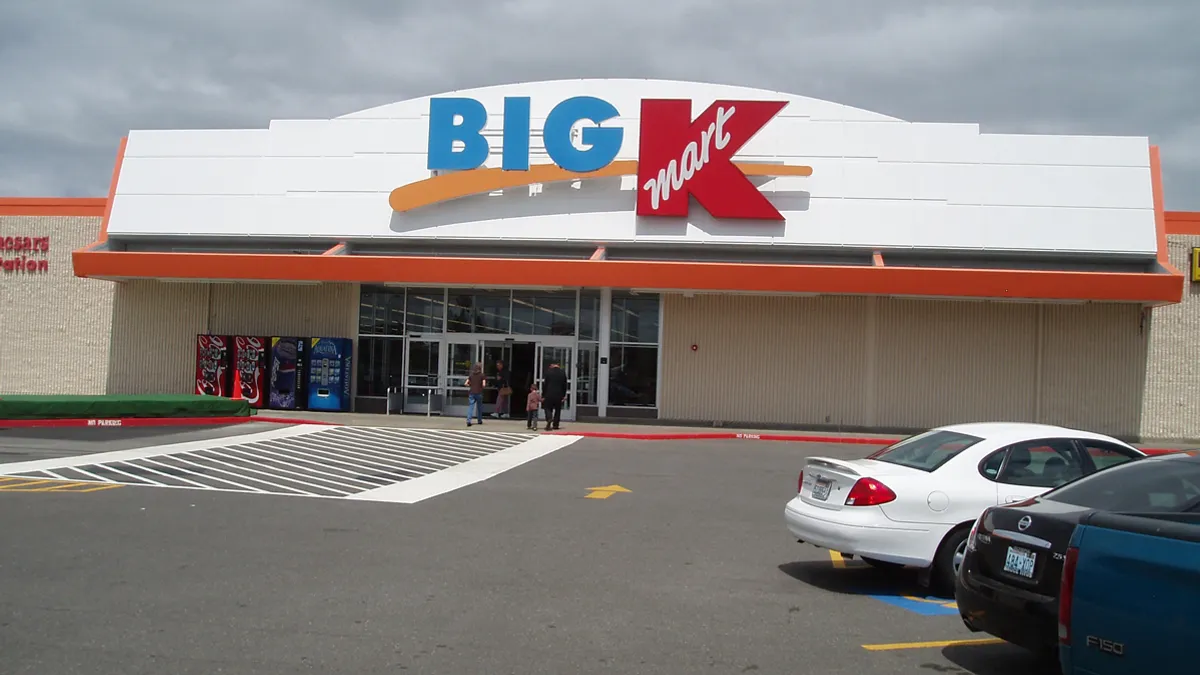Dive Brief:
-
Alasdair James, president and chief member officer of Sears Holding Co.’s Kmart unit since 2014, has left the company, Business Insider reports.
-
James is the third top Sears Holdings executive to depart within the last three months, leaving 11 people in senior management there, according to the report. Jeff Balagna, Sears executive vice president, and Joelle Maher, Sears president and chief member officer, left abruptly in December.
-
James joined Sears Holdings after serving as commercial director of global business at U.K. supermarket chain Tesco. His chief member officer role was a new title within the organization, designed to boost Kmart’s Shop Your Way loyalty program.
Dive Insight:
Last year Sears Holding Corp. took pains to refute rumors that Kmart would shutter completely, but little has changed in the months since: Sales keep shrinking, and top executives continue abandoning ship.
Some of Sears' somewhat successful cost management moves have included closing stores and laying off employees in brick-and-mortar operations as well as staffers at its Chicagoland headquarters. Sears Holdings also detailed moves to improve its customer experience, including a new Sears MasterCard with enhanced Shop Your Way loyalty rewards, an expanded partnership with Uber to boost rider rewards, mobile capabilities to enhance its Home Services operations and new services in its Auto Center business.
But those moves are the equivalent of “taking an Advil to cure a heart attack,” GlobalData Retail managing director Neil Saunders told Retail Dive in an email, adding that the results in its recent fourth quarter earnings report can only be described as dire.
“Not only are sales down, but the pace of decline has accelerated sharply,” Saunders noted. “At total level, some of this is the result of store closures across the year — something we believe is sensible and prudent in light of changing patterns of demand. However, much of the dip is also attributable to a slump in the number of shoppers visiting Sears and Kmart, and a continued deterioration in conversion rates among those that do.”
Both Sears (once a fixture of the American retail landscape and, in its golden era, a disrupter akin to Amazon) and sibling Kmart (once an iconic retailer in its own right) simply aren’t selling what consumers are buying. “On the contrary: [Sears'] product mix, its store environments, its customer service, and its general approach to retailing are actively deterring consumers from visiting,” Saunders said. “Kmart is in much the same position. In ordinary times this would be more than sufficient to cause major problems; in today’s pressured and competitive retail environment we believe that these things will ultimately prove fatal.”
Sears Holdings did manage to shrink its adjusted loss amid belt-tightening and inventory management during the fourth quarter of 2016, earlier this month reporting net losses of $137 million ($1.28 loss per diluted share) compared to $181 million ($1.70 loss per diluted share) in the prior year. Merchandise inventories as of Jan. 28 fell to $4 billion, compared to $5.2 billion as of Jan. 30, 2016, while merchandise payables dropped to $1 billion this year from $1.6 billion last year.
Still, Q4 2016 revenue fell to $6.05 billion from $7.3 billion in the year-ago period, and same-store sales plunged 10.3%. Sears same-store sales dropped 12.3% due to depressed sales of appliances, clothing, consumer electronics and tools, and Kmart same-store sales fell 8%, due to depressed sales of consumer electronics, toys, clothing and grocery and household goods. Full-year 2016 revenues were $22.1 billion compared to $25.1 billion in the prior year, due mostly to a decline of $1.3 billion from having fewer Kmart and Sears stores; full-year same-store sales declined 7.4%, with Sears down 9.3% and Kmart falling 5.3%.














